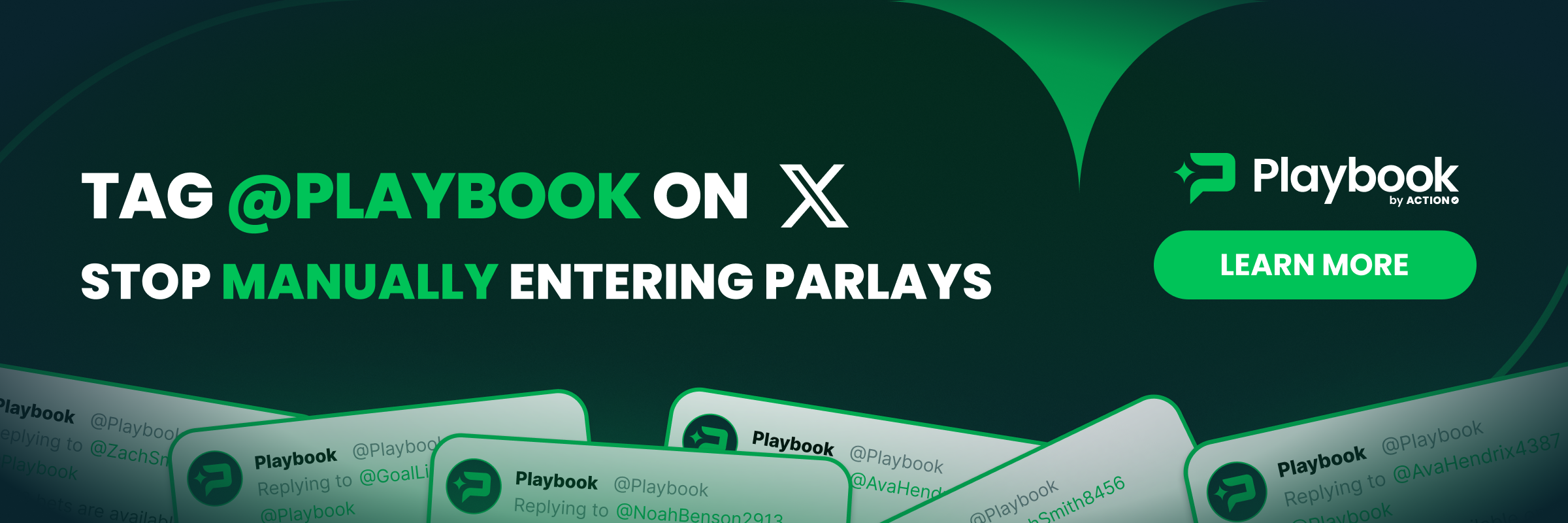NCAAF Projections
| SCHEDULED | OPEN | PRO LINE Projections Our model’s odds for each game, compared to the consensus odds. We recommend at least a Grade of B or a +3.5% Edge before considering a bet based solely on projections. | CONS. | GRADE | EDGE | BEST ODDS | BET % | MONEY % |
|---|---|---|---|---|---|---|---|---|
8:00 PM Army ARMY 453 Navy NAVY 454 | +4.5 -4.5 | +6 -6 | +6-105 -6-110 | 34%66% | ||||
+8.5 -8.5 | +9 -9 | +9.5-110 -8.5-110 | 14%86% | |||||
2:00 AM Troy TROY 199 Jax State JVST 200 | -3 +3 | -4 +4 | -4-105 +4-105 | 40%60% | ||||
10:00 PM Old Dominion ODU 201 S. Florida USF 202 | +7.5 -7.5 | +6.5 -6.5 | +6.5-115 -6-108 | 88%12% | ||||
1:30 AM Louisiana UL 203 Delaware DEL 204 | -3.5 +3.5 | -3 +3 | -2.5-115 +3.5-115 | |||||
+2.5 -2.5 | +2.5 -2.5 | +2.5-105 -2.5-110 | ||||||
+4 -4 | +4 -4 | +4-110 -3.5-110 | ||||||
7:30 PM Memphis MEM 207 NC State NCST 208 | +4.5 -4.5 | +5.5 -5.5 | +5.5-110 -5.5-108 | |||||
1:00 AM Alabama BAMA 295 Oklahoma OU 296 | -1.5 +1.5 | -1.5 +1.5 | +1-110 +1.5-115 | |||||
5:00 PM Miami (FL) MIA 297 Texas A&M TA&M 298 | +3.5 -3.5 | +3.5 -3.5 | +4-110 -3.5-110 | |||||
8:30 PM Tulane TULN 293 Ole Miss MISS 294 | +16.5 -16.5 | +17.5 -17.5 | +17-107 -17.5-105 | |||||
12:30 AM JMU JMU 291 Oregon ORE 292 | +20.5 -20.5 | +21 -21 | +21-105 -21.5-105 | |||||
+1.5 -1.5 | +3.5 -3.5 | +4-110 -4-106 | ||||||
7:00 PM Toledo TOL 211 Louisville LOU 212 | +8.5 -8.5 | +8.5 -8.5 | +9.5-110 -8.5-105 | |||||
10:30 PM W. Kentucky WKU 213 Southern Miss USM 214 | -3 +3 | -4 +4 | -4-110 +4.5-115 | |||||
2:00 AM UNLV UNLV 215 Ohio OHIO 216 | -4.5 +4.5 | -4.5 +4.5 | -4.5-108 +4.5-110 | |||||
1:00 AM California CAL 217 Hawaii HAW 218 | -1.5 +1.5 | -3 +3 | -3-106 +3-110 | |||||
+12.5 -12.5 | +12.5 -12.5 | +12.5-110 -12.5-108 | ||||||
9:30 PM New Mexico UNM 221 Minnesota MINN 222 | +3.5 -3.5 | +3 -3 | +3-107 -3-105 | |||||
1:00 AM FIU FIU 223 UTSA UTSA 224 | +8.5 -8.5 | +9.5 -9.5 | +9.5-105 -8.5-110 | |||||
-6.5 +6.5 | -6 +6 | -5.5-110 +6-110 | ||||||
5:00 PM Penn State PSU 227 Clemson CLEM 228 | -1.5 +1.5 | +3.5 -3.5 | +3.5-110 -3-110 | |||||
7:15 PM UConn UCONN 229 Army ARMY 230 | -2.5 +2.5 | +3 -3 | +3-108 -3-110 | |||||
8:30 PM GA Tech GT 231 BYU BYU 232 | +2.5 -2.5 | +3 -3 | +3-105 -3-110 | |||||
+3.5 -3.5 | +3.5 -3.5 | +3.5-110 -3.5-105 | ||||||
10:45 PM North Texas UNT 235 San Diego St SDSU 236 | -6 +6 | -3.5 +3.5 | -3.5-105 +3.5-110 | |||||
12:30 AM Virginia UVA 237 Missouri MIZ 238 | +7.5 -7.5 | +7 -7 | +7.5-110 -7-110 | |||||
2:15 AM LSU LSU 239 Houston HOU 240 | +2.5 -2.5 | +3.5 -3.5 | +3.5-115 -3-110 | |||||
-3.5 +3.5 | -2.5 +2.5 | -2-110 +2.5-106 | ||||||
7:00 PM Coastal Car CC 243 LA Tech LT 244 | +7 -7 | +7.5 -7.5 | +7.5-110 -7.5+100 | |||||
10:30 PM Tennessee TENN 245 Illinois ILL 246 | -7.5 +7.5 | -5.5 +5.5 | -5.5-108 +5.5-109 | |||||
2:00 AM USC USC 247 TCU TCU 248 | -6.5 +6.5 | -6.5 +6.5 | -6-112 +6.5-110 | |||||
5:00 PM Iowa IOWA 249 Vanderbilt VAN 250 | +3.5 -3.5 | +4 -4 | +4-110 -4-109 | |||||
7:00 PM Arizona St ASU 251 Duke DUKE 252 | +1.5 -1.5 | +1.5 -1.5 | +1.5-110 -1.5-110 | |||||
8:00 PM Michigan MICH 253 Texas TEX 254 | +4.5 -4.5 | +5.5 -5.5 | +5.5-110 -4.5-115 | |||||
8:30 PM Nebraska NEB 255 Utah UTAH 256 | +14 -14 | +14 -14 | +13.5+100 -14.5-105 | |||||
6:00 PM Rice RICE 265 Texas St TXST 266 | +9.5 -9.5 | +10.5 -10.5 | +9.5-102 -10.5-109 | |||||
9:30 PM Navy NAVY 267 Cincinnati CIN 268 | +5.5 -5.5 | -1.5 +1.5 | -1.5-102 +1.5-115 | |||||
1:00 AM Arizona ARI 271 SMU SMU 272 | -1.5 +1.5 | -2.5 +2.5 | -2.5-110 +2.5+100 | |||||
+2.5 -2.5 | +3 -3 | +3.5-120 -3-108 |
NCAAF Projections for 2025-26: Spread, Moneyline & Over/Under Insights
Welcome to your one-stop source for the latest ncaaf projections for the 2025-26 college football season. Our expert projections cover spreads, moneylines, and totals, blended with advanced modeling and betting market signals to help you find edges and value before kickoff.
What Are NCAAF Projections?
“NCAAF projections” refer to forecasted odds (spreads, moneylines, over/unders) for every college football matchup — built by synthesizing statistical models, expert handicapping, and live betting market data. These projections estimate what sportsbooks “should” be offering, which then allows bettors to detect value when public or consensus lines deviate.
How We Build Projections for 2025-26
To generate our NCAAF projections this season, we combine:
- Power ratings and advanced metrics: Reviewing offense, defense, special teams, tempo, efficiency, recruiting impact, roster turnover from 2024 to 2025.
- Team news and injuries: Especially at key positions like quarterback. A QB injury or change in coaching staff triggers re-evaluation.
- Home-field advantage and rest/back-to-back weeks: Travel, bye weeks, and short weeks matter.
- Historical performance and trend analysis: How teams performed in similar matchups, under similar conditions.
- Live betting market data: consensus lines, sportsbooks’ odds, public betting percentages. Our models aim to spot “edges” when our projections differ meaningfully from current market lines.
What You’ll See in Our NCAAF Projections
For each game, we provide:
- Spread projection: Predicted margin between the two teams (how many points one is favored by).
- Moneyline projection: Odds for each team to win outright.
- Over/Under (Total): Predicted combined points scored by both teams.
- Edge: The difference (as a percentage) between our projection and the consensus/sportsbook line — this helps identify betting value.
- Grade: A letter grade (A-F) reflecting the strength of that edge; helps you quickly see which games to focus on.
Why 2025-26 Is Different
This season brings unique variables that are influencing NCAAF projections more than usual:
- The continued evolution of transfer portal usage means more roster turnover; projections now need to put greater weight on how well teams integrate new starters.
- Rule changes & officiating emphasis (passing/interference, targeting, etc.) that affect scoring trends and how defenses adjust.
- More parity in some conferences – there are fewer “guaranteed wins,” so projections are tighter and spread predictions often smaller.
- Increased data availability: wearable data, player usage, fatigue metrics are increasingly incorporated into projection models.
How to Use Projections in Betting
- Spot the edge: Compare our 2025-26 projections vs current sportsbook lines. An edge of +3.5% or higher often starts to look compelling.
- Respect key numbers: A spread of 6.5 vs. 7, or a total of 49.5 vs. 50.5, can matter significantly because of scoring patterns in football.
- Monitor news up to game day: Last-minute injuries or weather shifts can swing spreads or totals and affect value.
- Diversify bets: Don’t just pick spreads — sometimes moneylines or overs/unders offer better return, depending on matchups.
- Use power ratings: Our projections derive from power ratings that update weekly, reflecting latest performance, rest, injuries, momentum. Use these to compare teams even before lines drop.
Example: Sample Projections
Say the Georgia Bulldogs have a spread of -6.5 vs. the Florida Gators. In that situation, a spread bet on Georgia would cash if they won by a touchdown or more. A bet on Alabama at +6.5 would cash if they won the game outright or merely lost by six or fewer points.
Note that key numbers are important in projecting an edge in college football. Key numbers are just numbers that a game is likelier to land on because of the scoring in football: A 2-0 game is much less likely to occur than a 7-0 game. That means the difference between 6.5 and 7 on the spread is much more important than the difference between 12.5 and 13. The way we grade our NCAAF projections vs. the consensus accounts for these key numbers.
Key numbers are also vital for totals, or over/unders, which are bets on the combined point output in a game. For a new bettor, you'll see a total number posted at a sportsbook and you'll be able to bet the over or under. Say the Oregon Ducks vs. Oklahoma Sooners game has a total of 64 points: Bettors on the under would cash if the teams combined for 63 or fewer points; over bettors would win at 65 or more.
Key numbers are also important in totals betting because, again, scoring isn't by ones, twos, or threes like it is for, say, basketball. Since touchdowns are worth seven points apiece (assuming the extra point is made), total numbers in multiples of sevens and threes are more likely to occur.
You don't have to worry about key numbers in moneyline betting, which is a common wager type just on which team will win the game outright. Everything here depends on the likelihood of a team winning (the odds a book will post) vs. how likely our NCAAF projections say that team is to win.
It's easiest if you think about moneyline odds in terms of $10 or $100 increments. Say the Texas Tech Red Raiders are +250 on the moneyline vs. the Clemson Tigers, who are -290. If you bet $10 on Texas Tech and they won, you would receive $25 in profit. A bet on Clemson, who are favored, would require $29 bet to win $10 in the event of a victory.
Projections vs. Public Sentiment
Sometimes what our projections say diverges from what the public is betting. These misalignments can signal value:
- When public heavily backs the favorite, but our model’s projected spread is smaller.
- When underdogs get little attention but our model suggests they win outright with reasonable probability.
- When totals are inflated by marquee names or high-profile games, but underlying defense/offense metrics suggest lower scoring.
Stay Current: Weekly Updates & Trends
- Projections are refreshed weekly, especially when new stats, injuries, or reports come in.
- We track which teams are trending up or down — momentum matters.
- Bet monitoring: watch how sharp bettors are leaning, and where public money is going. These can influence line movement, sometimes creating last-minute value.
Final Word
If you're serious about getting an edge in college football betting, these NCAAF projections are essential. They don't predict upsets or guarantee wins — but they give you a probabilistic foundation to make smarter bets. Use them to find mismatches, exploit line inefficiencies, and avoid getting caught up in hype.
Updated for the 2025-26 season, our projections reflect the realities of roster shifts, scoring trends, and a tighter market. Bookmark this page, check it weekly, and let the numbers guide you.

